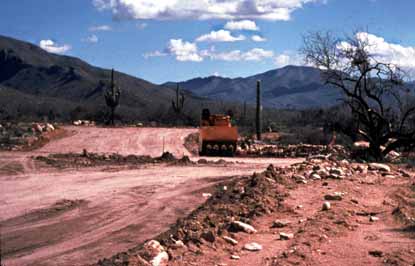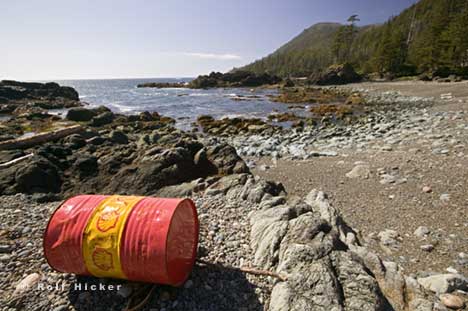Endangered Species: Causes of the Problem
Home
Introduction
Causes
Solutions
Further Reading
Games and Activities
Credits
Habitat Destruction
Our planet is continually changing, causing habitats to be altered and modified. Natural changes tend to occur at a gradual pace, usually causing only a slight impact on individual species. However, when changes occur at a fast pace, there is little or no time for individual species to react and adjust to new circumstances. This can create disastrous results, and for this reason, rapid habitat loss is the primary cause of species endangerment. The strongest forces in rapid habitat loss are human beings.
It can be difficult for an individual to recognize the effects that humans have had on specific species. It is hard to identify or predict human effects on individual species and habitats, especially during a human lifetime. But it is quite apparent that human activity has greatly contributed to species endangerment.

Habitat Destruction
Introduction of Exotic Species
Native species are those plants and animals that are part of a specific geographic area, and have ordinarily been a part of that particular biological landscape for a lengthy period of time. They are well adapted to their local environment and are accustomed to the presence of other native species within the same general habitat. Exotic species, however, are interlopers. These species are introduced into new environments by way of human activities, either intentionally or accidentally. These interlopers are viewed by the native species as foreign elements. They may cause no obvious problems and may eventual be considered as natural as any native species in the habitat. However, exotic species may also seriously disrupt delicate ecological balances and may produce a plethora of unintended yet harmful consequences.
The worst of these unintended yet harmful consequences arise when introduced exotic species put native species in jeopardy by preying on them. This can alter the natural habitat and can cause a greater competition for food. Species have been biologically introduced to environments all over the world, and the most destructive effects have occurred on islands. Introduced insects, rats, pigs, cats, and other foreign species have actually caused the endangerment and extinction of hundreds of species during the past five centuries. Exotic species are certainly a factor leading to endangerment.
Overexploitation
A species that faces overexploitation is one that may become severely endangered or even extinct due to the rate in which the species is being used. Unrestricted whaling during the 20th century is an example of overexploitation, and the whaling industry brought many species of whales to extremely low population sizes. When several whale species were nearly extinct, a number of nations (including the United States) agreed to abide by an international moratorium on whaling. Due to this moratorium, some whale species, such as the grey whale, have made remarkable comebacks, while others remain threatened or endangered.
Due to the trade in animal parts, many species continue to suffer high rates of exploitation. Even today, there are demands for items such as rhino horns and tiger bones in several areas of Asia. It is here that there exists a strong market for traditional medicines made from these animal parts.
More Factors
Disease, pollution, and limited distribution are more factors that threaten various plant and animal species. If a species does not have the natural genetic protection against particular pathogens, an introduced disease can have severe effects on that specie. For example, rabies and canine distemper viruses are presently destroying carnivore populations in East Africa. Domestic animals often transmit the diseases that affect wild populations, demonstrating again how human activities lie at the root of most causes of endangerment. Pollution has seriously affected multiple terrestrial and aquatic species, and limited distributions are frequently a consequence of other threats; populations confined to few small areas due to of habitat loss, for example, may be disastrously affected by random factors.

Ocean Pollution
Resource: http://www.endangeredspecie.com/causes_of_endangerment.htm